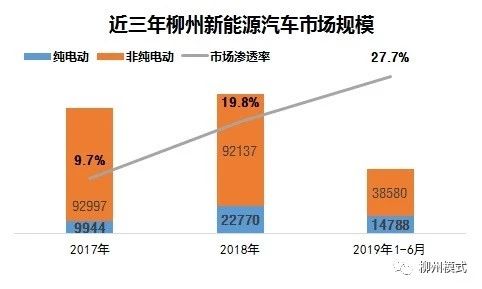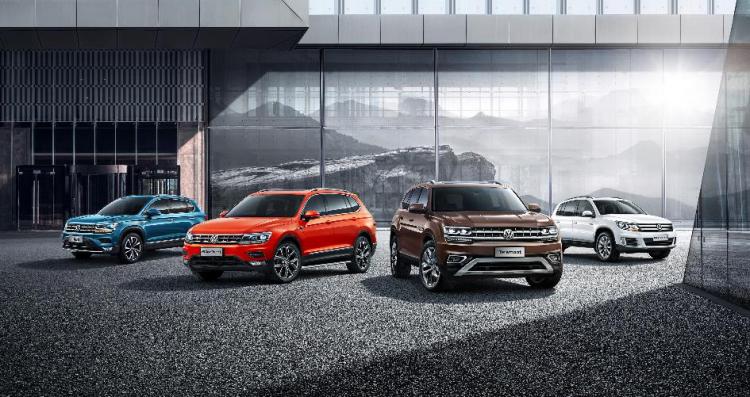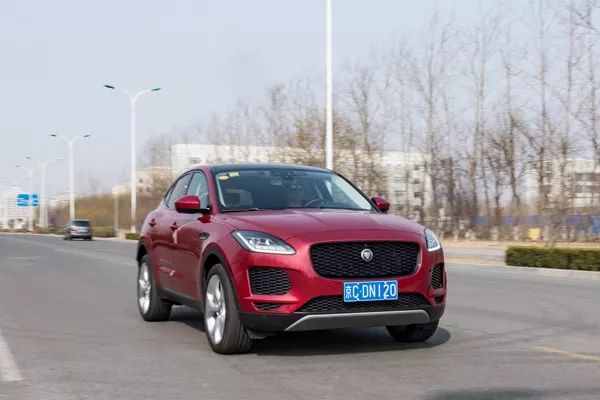A few days ago, a summit forum with the theme of “Creating a New Travel Life – Car + 5G, Smart Connectivity” was held in Guangxi. At the meeting, a unique new energy promotion and application model of government-enterprise linkage – “Liuzhou Model” shined brilliantly. Important guests such as Ouyang Minggao, academician of the Chinese Academy of Sciences, and Lin Zhongqin, academician of the Chinese Academy of Engineering, attended the forum. Leading experts such as Wang Binggang, leader of the expert group of the National New Energy Vehicle Innovation Engineering Project, and Dong Yang, former executive vice president of the China Association of Automobile Manufacturers, spoke highly of the Liuzhou model.
So, what kind of model is the Liuzhou model? What references does the “Liuzhou Model” provide for the promotion and application of new energy vehicles? What value has been created for users? What is the scene of electrified travel in Liuzhou, where there are no traffic restrictions and license plates?
Two years to create a win-win situation
The “Liuzhou Model” is a new energy vehicle promotion model created by SAIC-GM-Wuling with the Baojun E100 and E200 series products as the core, mobilizing the close cooperation of various resources including the government. Its outstanding feature is that automobile manufacturers cooperate closely with local governments to develop models suitable for use in cities, taking advantage of the advantages of electric vehicles and corporate technical expertise; promote the development of electric vehicles. In 2017, Baojun E100, SAIC-GM-Wuling’s first new energy product, was launched. In just two years, the “Liuzhou Model” has achieved impressive results:
1. The market penetration rate is 27.7%. The large-scale promotion and application of new energy vehicles in Liuzhou started in 2017. According to the insurance data of new vehicles in Liuzhou, the market penetration rate of pure electric vehicles rose from 9.7% in 2017 to 19.8% in 2018, and further jumped to 27.7% in the first half of this year. %. The significance of this number is that Liuzhou, as a representative city of the third and fourth tier cities, has completed the national planning goal of 20% of the energy-saving and new energy vehicle industry development goals ahead of schedule; The goal of reaching 50% of the global new energy vehicle market share in 2019 has injected a booster.

2. The electric travel rate is 23%. The sales data is not enough to prove that new energy vehicles are popular products. Private consumers are actively buying and willing to use them to represent that new energy vehicles have become people’s travel companions. The appearance rate of new energy vehicles in Liuzhou keeps rising. According to incomplete statistics, 23 out of every 100 private cars for daily commuting in the city are new energy vehicles, which means 23% of the electric travel rate. Purchasing and using frequently is the greatest affirmation of the product by users, and it also represents the continuous maturity of market-oriented applications of new energy vehicles.
3. The slow charging pile ratio is 3:1. The promotion of new energy vehicles is inseparable from the complete charging infrastructure. Through the promotion of charging sockets, the charging problems of the largest number of users are solved by using the least amount of public resources. At present, the number of new energy vehicles in Liuzhou exceeds 50,000, and the ratio of them to charging facilities (including charging sockets) is about 3:1, which has reached the forecast of 3.2:1 in 2019 by the China Electric Vehicle Infrastructure Promotion Alliance in advance . Among them, the idea of infrastructure construction based on slow charging comprehensively balances the supply and demand of the power grid, price cost, construction cost and frequency of use, and verifies the feasible plan of slow charging in the city and auxiliary fast charging.
4. The ratio of dedicated parking spaces is 3:1. Parking resources are not only an important guarantee for the use of new energy vehicles, but also a key support for the construction of charging infrastructure. In Liuzhou City, a large number of parking spaces for new energy vehicles have been added without occupying the parking resources of traditional fuel vehicles by making full use of the gaps between trees on the sidewalk, idle space in the community, and roadside resources. The second is to make full use of the advantages of miniaturized new energy vehicles, and park two new energy vehicles with two seats in a standard parking space, which greatly improves the utilization rate of existing parking resources. At present, the ratio of new energy vehicles to parking spaces in Liuzhou is about 3:1. The increase of new energy vehicles is not to increase the burden on urban public resources, but to promote the intensive development of urban resources, and to establish a benign relationship between use, parking and charging. Interactive ecology.
5. Urban traffic efficiency increased by 35%. With the flexible maneuverability of miniature new energy vehicles, high-density special berths for new energy vehicles, and the facilitation traffic policy provided by the government, electrified travel is not only energy-saving, emission-reduction and economical, but also convenient and efficient transportation. . According to survey statistics, new energy vehicle users in Liuzhou save an average of 13 minutes of parking time, 13 minutes of parking time, and 19 minutes of congestion time every day, which improves the city’s daily traffic efficiency by about 35%.
6. Stimulate local consumption to grow by 11%. The average annual automobile consumption market in Liuzhou is about 100,000 vehicles, with a net increase of 15,000 vehicles in 2018 compared with 2017. From the perspective of fuel type, all of them are pure electric vehicles. New energy vehicles have become a significant increase in driving car consumption, becoming the first choice for the second car of the family, effectively driving local consumption growth by about 11%, and forming a new consumption momentum.
7. The green number is over a million. Up to now, Baojun New Energy has a total mileage of 343,837,550km; equivalent to saving 27,507,004 liters of fuel, equivalent to reducing carbon dioxide emissions by 42,635,856.2kg, equivalent to planting 2,329,828 trees, and earnestly fulfilling the mission of green travel. According to a Liuzhou Daily report on May 19, 2019, the ambient air quality of Liuzhou City ranked 91st among 337 cities in the country in the first quarter, 59 places higher than the same period last year, reaching the best level in the same period in the past five years. Since the beginning of this year, the concentration of major pollutants in the ambient air of Liuzhou City has dropped significantly. The average concentrations of PM10 and PM2.5 in the city’s ambient air are 52 μg/m3 and 40 μg/m3, respectively, a year-on-year decrease of 35% and 29.8%. . From January to April, the city had 107 days with good air, an increase of 20 days year-on-year; the ratio of days with good air was 89.2%, an increase of 16.1 percentage points year-on-year. The correlation effect between the promotion of new energy vehicles and the improvement of Liuzhou’s ecological environment is very obvious.
In just two years, the “Liuzhou Model” has successfully achieved a win-win situation for users, the government, and enterprises in non-restricted cities. In 2018, the “Liuzhou Model” was promoted to all parts of Guangxi, and thus became the “Guangxi Model”.
Government-enterprise linkage, products and services promote the development of Liuzhou model
For the industry, the biggest concern is whether the success of the “Liuzhou Model” can be replicated? In the era of declining subsidies, what are the “Liuzhou Models” worth learning from?
Dong Yang, the former executive vice president of the China Association of Automobile Manufacturers, summed up the core essence of the “Liuzhou Model”, that is, market-oriented, and the development of models that have market demand and can play the advantages of electric power, not blindly increasing the mileage and seeking subsidies; It is user-centered, carefully investigates and studies, formulates policies and measures to facilitate the promotion of electric vehicles from various aspects, and implements them; third, the government and enterprises cooperate closely. In the early days of policy formulation, the government dispatched more than 20 cadres to work together with business experts.
User-centric and close cooperation between government and business. More specifically, the active cooperation of products with insight into user needs, preferential and convenient policies, and government-enterprise linkage has jointly created the success of the “Liuzhou Model”.
In terms of products, SAIC-GM-Wuling has defined the positioning of new energy products from the beginning of research and development. Enterprises realize that in the short term, especially in non-restricted cities, limited by various factors such as battery technology and charging technology, new energy products cannot replace the status of traditional energy vehicles, nor can they replace the travel scenarios of traditional energy vehicles. New energy vehicles have a unique use scenario, that is, as a “second family car”, meeting the needs of daily commuting and expanding personal social radius.
Under this kind of thinking, Baojun new energy products were born. Baojun E100 and E200 series products are designed with three doors and two seats. They are compact and smart, making urban travel more convenient. The cruising range is up to 250km. At the same time, the power consumption per 100 kilometers is about 10 degrees, and the cost per kilometer is only about 0.06 yuan, which meets the needs of daily travel. At the same time, it is more economical; at the same time, the safety and comfort of the model are also guaranteed, and the appearance is also very in line with individual aesthetic needs. Not only that, Baojun new energy products are also very convenient to charge. They can be charged with a daily 220V power supply. They are also equipped with innovative charging sockets, which can realize economical and convenient use without grid expansion, and make charging more convenient. In order to meet the needs of users for fast charging, Baojun New Energy is also equipped with a 6.6kW charger, which can be fully charged in about 4 hours. In terms of services, Baojun New Energy also provides users with a good experience, providing door-to-door pick-up and return, 7×24-hour butler service, scooter and other butler-style services. There are 9,000 suggestions and 12,000 product iteration suggestions to promote further product improvement and service improvement.
It can be said that Baojun’s new energy products not only solve the travel pain points of traditional energy vehicles, such as travel difficulties, parking difficulties, and high vehicle costs, but also perfectly resolve the problems of new energy products such as difficulty in charging and mileage anxiety.
Enterprises are boldly innovating, and the government is also vigorously supporting them. Governments at all levels have provided sufficient policy guarantees for the promotion of new energy. The Liuzhou government has formulated eight convenient policies to encourage the development of new energy, including the half-price policy for new energy parking and the construction of special berths for new energy. Users in Liuzhou can enjoy a very worry-free car experience. In Liuzhou, new energy vehicles can pass on the bus lanes in the urban area, and are not restricted by the number restriction measures; Liuzhou has planned more than 6,800 new energy special parking spaces, and the city government allows temporary parking or parking lots in public places In Liuzhou, new energy vehicles can enjoy free parking; Liuzhou City has built a total of about 11,000 charging sockets, and provides special subsidies to units that build or assist charging facilities, and also provides users with charging subsidies while using new energy vehicles.
At the same time, the government and enterprises have also established an efficient linkage mechanism, which can quickly solve many problems in practical applications and promote the rapid promotion and popularization of new energy.
Intelligent network drives the new model of the future
At the same time, the Liuzhou model is also expanding its connotation. Dong Yang pointed out that Liuzhou City has created new experience in promoting the development of intelligent networked vehicles.
At present, SAIC-GM-Wuling is actively deploying, relying on the strong support from the government, and cooperating with many enterprises to promote the development of intelligent network connection. During the summit forum, SAIC-GM-Wuling officially obtained the test license for intelligent connected vehicles issued by the Liuzhou Municipal Government, announced the world’s first four-in-one public test road, and cooperated with SAIC-GM-Wuling to apply 5G, V2X and other intelligent connected vehicles in actual scenarios technology. This test road jointly built by SAIC-GM-Wuling, Huawei, China Mobile, UISEE and the government of Guangxi Autonomous Region is industry-leading. Nine 5G base stations that were first built on public test roads in China have been opened. SAIC-GM-Wuling Baojun E100 and E200, as the leading products of the company’s “new four modernizations” (electrification, networking, sharing, and intelligence), first realized the test and application of intelligent networking functions. At present, Baojun new energy low-speed self-driving vehicles have also been widely used in in-plant logistics. At the same time, Baojun E100 is the first product in the industry to realize the smart parking function delivered to users, and the first to realize LV4 level driverless driving in public communities.
With the rapid development of cutting-edge technologies such as 5G and the Internet of Things, the automobile industry is bound to usher in changes. The connotation of the Liuzhou model will also be further expanded. For the market and consumers, intelligent networked vehicles combined with 5G technology and the smart travel experience created by them will reach consumers faster.
epilogue
The promotion of new energy products is not a one-time event. The “Liuzhou Model” fully considers the actual development of new energy, fully mobilizes the superior resources of the government and enterprises, fully meets the actual needs of users, and provides a good reference for the popularization and promotion of new energy at this stage. Wang Binggang, leader of the expert team of the National New Energy Vehicle Innovation Engineering Project, believes that the Liuzhou model is an innovative model for promoting new energy vehicles in second- and third-tier cities. Local governments and enterprises work closely together to take a series of effective measures in various aspects such as consumer experience, vehicle purchase, service management, and use environment, which not only provide consumers with good products, but also provide consumers with convenient, green, and efficient travel conditions. At the critical moment when my country’s new energy vehicle subsidy policy is changing, the Liuzhou model has important reference value.




